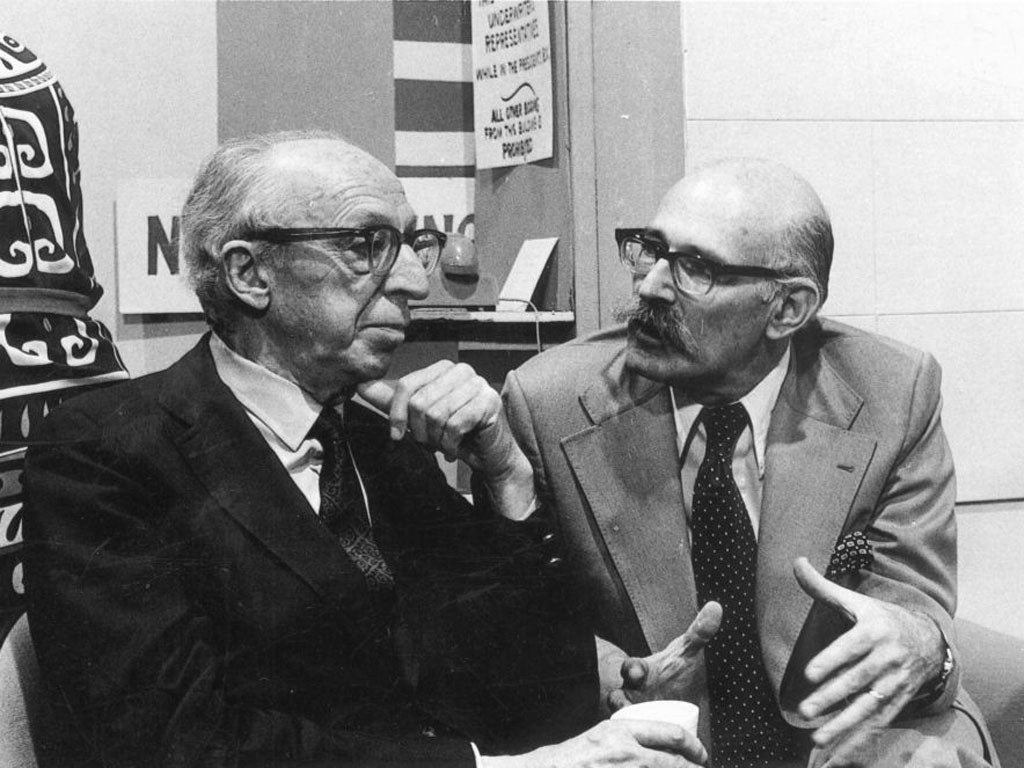Howard H Scott: Record producer who was part of the team that created the LP

Howard H Scott was a celebrated record producer and the last surviving member of the team at Columbia Records that successfully developed the long-playing record under conditions of total secrecy in the 1940s.
The team produced what became the de facto universal technical standard for the recording and dissemination of music over the succeeding 35 years.
Howard Hillison Scott was born in 1920 in Bridgeport, Connecticut, the son of a judge. He graduated from the University of Rochester with a BA in Music in 1941 then studied at the Juilliard School, but he was drafted into the army in May 1942 and was posted to Europe. On leaving with the rank of captain he enrolled at the Guildhall School of Music under an enlightened American scheme for US personnel awaiting repatriation.
In 1946 he returned to Juilliard, but soon became one of Goddard Lieberson's "young men" at CBS and became part of the secret team developing the long-playing record for Columbia Masterworks. He became Music Co-ordinator because he was the only one who could read scores. Working with engineer Paul Gordon before the days of tape he developed the method of cross-fading four-minute 78rpm sides into continuous soundtracks. His initial target was to produce 100 LPs, and it saw him, even though newly married, sleeping in the office during much of the project.
He participated in the now legendary June 1948 press launch at New York's Waldorf Astoria: the press were faced with a pile of 78s eight-foot high side-by-side with their LP equivalents, 100 discs 15 inches high. It was a sensation. Scott reminisced with relish that the president of NBC, their major commercial competitor, "berated his research people ... and left in a huff."
Perhaps the key to Scott's later career was his remarkable versatility and catholic musical tastes: he produced recording sessions in classical, jazz, Broadway and popular repertoire. His daughter remembers him as the "ultimate Anglophile" and he was many times the guest of Anthony Pollard, owner and editor of Gramophone magazine, whom he met in 1949. Pollard remembers him warmly as "very full of life, an incredibly amusing character, given to practical jokes." Scott's later handlebar moustache was modelled on Pollard's.
The launch of the LP was overwhelmingly successful and Scott became head of Columbia's team in New York, which in four years released over 1,000 albums. During this time he also took night classes at New York University School of Business Administration, and in 1952 he became Columbia Masterworks' recording director and senior producer. Working with a galaxy of stellar musicians and most of the leading American orchestras, he produced between 75 and 100 albums a year for the Columbia, Harmony and Epic labels.
Notable among his orchestras was the Philadelphia Orchestra conducted by Eugene Ormandy, where his first production was Honegger's dramatic oratorio Jeanne d'Arc au Bucher with Vera Zorina, Lieberson's wife, in the title role. In 1960 he was the producer when Leopold Stokowski returned to Philadelphia after 20 years and made two records. Other major recordings included Bruno Walter's Beethoven Choral Symphony in 1953, Shostakovich with Dimitri Mitropoulos, Bernstein, Beecham, Cantelli, Igor Stravinsky, and Robert Craft conducting the complete works of Webern on four LPs. Artists became close personal friends, none closer than the violinist Isaac Stern.
Scott also engaged on a range of freelance activities, advising and producing television series including Bernstein's Young People's Concerts, the Victor Borge Specials and The Telephone Half Hour Special. Reinforcing his interest in music by living composers, he acted as recording director and producer for the Louisville Orchestra's series of LPs.
With a dramatic change of repertoire he then became Director of Albums for MGM records in their pop album department (1961-63), followed by two years creating and producing music and jingles for radio and television at Ted Bates Inc. He returned to mainstream recording in 1965 as producer at RCA Red Seal with a roster of leading artists. His recording of Morton Gould and the Chicago Symphony in Ives' First Symphony won the 1966 Grammy Award as Best Classical Album.
After three years Scott moved to AA Records, whose label Golden Records specialised in children's repertoire, producing some 50 LPs, 20 of them recorded in London. The label featured celebrity voices including Danny Kaye and Alfred Hitchcock. The notable releases during Scott's time were the Sesame Street book and record and the Muppet Alphabet Album.
After four years he moved to Belwin Mills as Multimedia Director, a company producing AV materials for education and business. In 1973 he became executive manager of the Rochester Philharmonic, an orchestra teetering on bankruptcy and closure. He revitalised the orchestra and its finances. After three years he briefly went freelance, his activities now focused on Mexico, working for the Casals Festival of Mexico, with initiatives including the construction of a recording studio.
His second long-lasting appointment came in 1977 when he became a music publisher as Vice President, Performance Division with the music publisher G Schirmer Inc of New York. He promoted a large catalogue with a notable strand of living American composers. After nearly nine years he went back to CBS Classical for seven years to remix his former recordings for CD. The catalogue, taken over by Sony, largely remains available.
Scott's last years were touched by tragedy. His first wife, Elsa, died in September 1987 at the age of 61, but his subsequent wives, Anne Gillespie and Patti Huey also predeceased him. His role in the history of recorded music is secure.
Howard Hillison Scott, record producer and music publisher; born 31 May 1920; married 1948 Elsa Cecilia Goodman (died 1987; one son, one daughter), 1990 Anne Gillespie (died 1999), 2005 Patti Huey (died 2010); died: Reading, Pennsylvania 22 September 2012.
Join our commenting forum
Join thought-provoking conversations, follow other Independent readers and see their replies
Comments